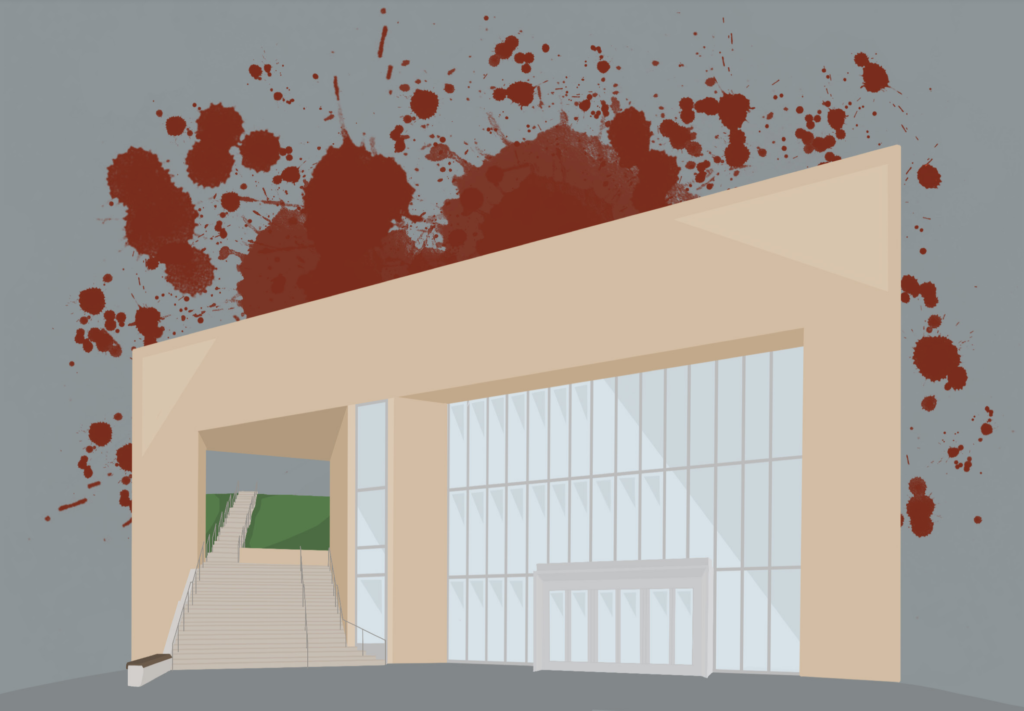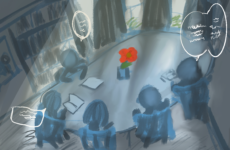Peek inside any classroom on campus, and you’ll notice everyone staring at their screens, either aggressively scribbling on iPads or typing away at their computer. Choate’s use of technology — specifically, the School’s one-to-one iPad program — is touted in nearly every promotion. Modern technology has replaced paper in almost every part of the classroom; teachers assign almost all of their class assignments using platforms like Canvas or Google Classroom and many have even shifted to giving online assessments. Paper has become a thing of the past — so much so that I’ve found myself trying to do Notability functions on paper.
There are certainly great things about this change. With the use of technology, Choate can better fulfill its mission of becoming a more environmentally friendly school reducing paper use. Technology also serves to make classwork and homework more efficient. Tests can be distributed more easily, and test-taking can be monitored digitally. Digital drawing software allows us to take more robust and comprehensive notes. Communication platforms allow faculty and students to send messages with ease. The benefits are endless.
But this technological shift isn’t without concern. The main issue is the overuse of screens and the impact it has on our brains and bodies. Most students and teachers spend hours looking at screens daily. I’ve recently been checking my daily screen time across all of my devices, and it frequently exceeded 12 hours — about two-thirds of the time I’m awake. This number is relatively consistent among my peers.
The use of technology in classrooms, coupled with teenagers’ already heightened use of screens for social media, communication, and games, forces students’ screen times to exceed the healthy amount for someone of their age: no more than two hours daily says the American Academy of Pediatrics. And while your parents may tell you to stop using your phone for the sake of your vision, in reality, the detrimental effects can be much worse. An ongoing study of thousands of children and teenagers by the National Institutes of Health (NIH) found that heavy screen time can have a harmful impact on a kid’s emotional, psychological, and cognitive development. Sure, it depends what, precisely, the user is doing, but, ultimately, this kind of excessive use of screens harms students’ brains.
What makes this problem even worse is that students tend to use their devices late into the night, often turning them off just minutes before they go to bed. A 2011 Sleep Health Foundation report found that the bright light from screens inhibits the production of melatonin, the chemical in your brain that is responsible for getting you to fall asleep. Not to mention, notifications and other distractions emitted from students’ devices encourage procrastination and prolong the length of time it takes to get assignments done. This means that students, who already struggle to get sufficient sleep, now have another obstacle to getting a good night’s rest.
But, banning all screens on the School’s campus and assuming the two-hour limit is impossible with technology so heavily integrated into our lives. What would be beneficial is for teachers to offer work that can be done without technology. This could mean assigning a math problem set that is done on paper instead of Notability or an English essay written by hand instead of typed. These modifications would go a long way in improving students’ mental and physical health, allowing a better and brighter future for all of Choate.




